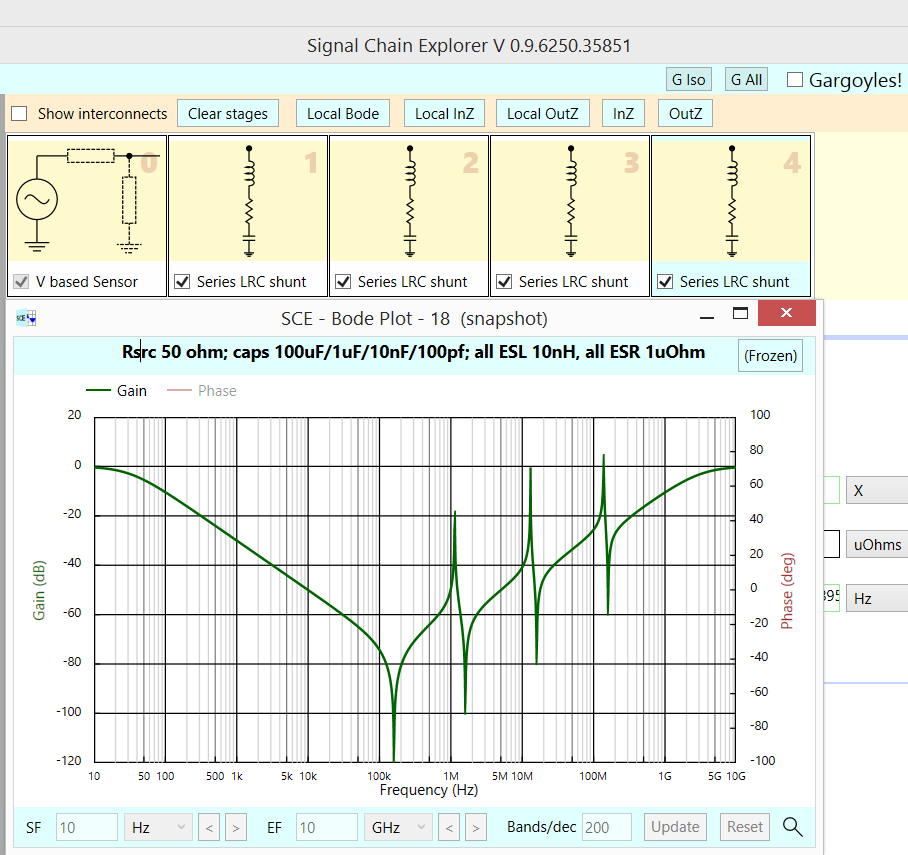Summary: the individual capacitors need dampening; for 100uF caps, the solder and PCB foil may suffice (10milliOhm, if L = 10nH); for 1uF, use 0.1 ohm; for 10nF, use 1 ohm, etc.
Here with 4 capacitors, 100U/1U/10n/100p and 10nH ESL, the peaking depends on the losses in each cap {I consider sqrt(L/C) a good start; thus 10nH and 10pF needs 3.1 ohms, which I have not used here; however, 10nH and 100uF need 10 milliohm, which is illustrated in the 3rd screenshot.}
Lets examine this response, with 1 microOhm ESR in each cap. Notice the lowest dip is to -120dB. Zsource is only 50 Ohms.

Now this response, with 1 milliohm ESR in each cap. Zsource is 50 Ohms.
And now 10 milliohm ESR for each cap, Zsource is 50 Ohms.
And with 10milliOhm in each cap, with the Zsource now 1uH + 50 ohms
Here is (requested) SCE sim [available at robustcircuitdesign.com for free] with 4 identical 1UF caps, each with 10nH ESL and 10milliOhms. There are NO PEAKS, because the 10milliOhm dampens those peaks. [or is the Zsource, of 50 ohms and 1uH, what dampens??]
In prior sim, there was no peaking. So I insert 3 inductors between the 4 caps. Now a sim of those 4 caps + 3 inductors (PCB foil, 10nH each). Notice the peaking returns (the ESR is only 1 ONE milliohm, to show peaking), at -20dB.





